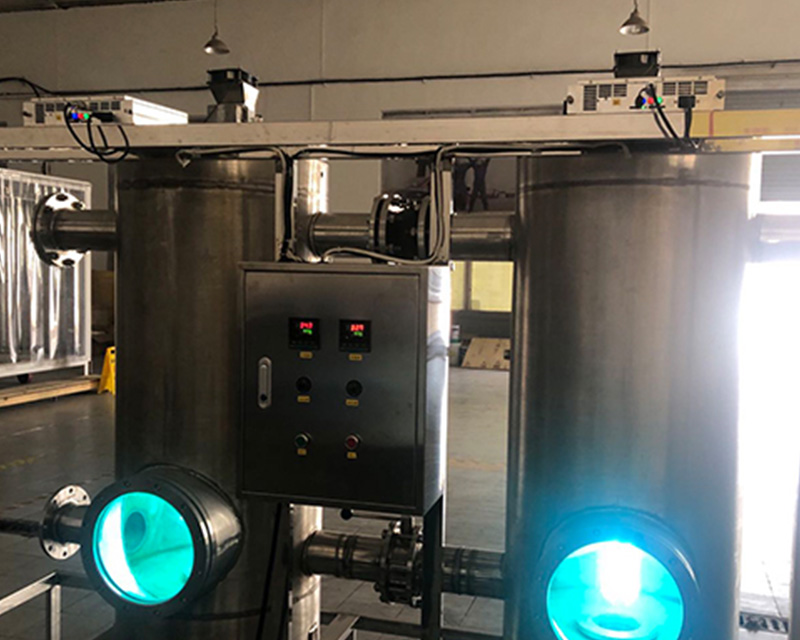Open channel ultraviolet sterilization equipment It is now the standard configuration of most wastewater disinfection systems. Drinking water communities also use ultraviolet light as a barrier against chlorine tolerant species such as cryptosporidium and giardia. This technology is widely favored due to its non chemical characteristics, the fact that no subsequent dechlorination process is required, and its disinfection performance is non selective. Many engineers usually incorporate ultraviolet water treatment technology into their routine treatment processes, but they ignore "the progress made in understanding the impact of hydraulic systems on the performance of ultraviolet systems in recent years" and continue to place ultraviolet lamps in open channels; In fact, it is more effective to contain the waste stream in the pipeline and sterilize the fluid in a closed container.

Frame type ultraviolet sterilizer: ultraviolet ray can damage DNA of almost all biological species. Once DNA is damaged or dimerized, organisms cannot perform conventional cellular functions such as respiration, food assimilation and replication, which will lead to the loss of cell viability and rapid death of organisms. With the emergence of UV system validation using bioassay technology, the efficiency of UV disinfection systems from different UV sterilizer manufacturers is low. Bioassay involves introducing nonpathogenic organisms (biological dosimeters) into the fluid stream prior to the UV system. The whole process was carried out under controlled conditions, and each system variable: flow, transmittance, power load and lamp intensity were carefully recorded, because the samples were collected before and after the UV system. When sample data is returned from the analytical laboratory, the actual system disinfection capability can be compared with the manufacturer's statement. Of course, this kind of bioassay can be carried out under the auspices of a trusted third party. With the biometric verification becoming the standard, water treatment engineers have begun to notice how hydraulic technology plays an important and often neglected role in system performance. Essentially, if the UV system design allows for short circuits or poor turbulence, then water will receive varying levels of UV dose. In extreme cases, water will be short circuited directly through the UV system, resulting in very low efficiency. Most UV systems need to deal with various flow rates, and the operating flow range is usually considered when designing UV systems.
Typical problem associated with this: thus reducing the residence time required for adequate UV dose delivery - the situation would be worse if the open channel was designed for average dry weather flow rather than peak wet weather flow, where head loss would affect the upstream process and damage the channel wall.

